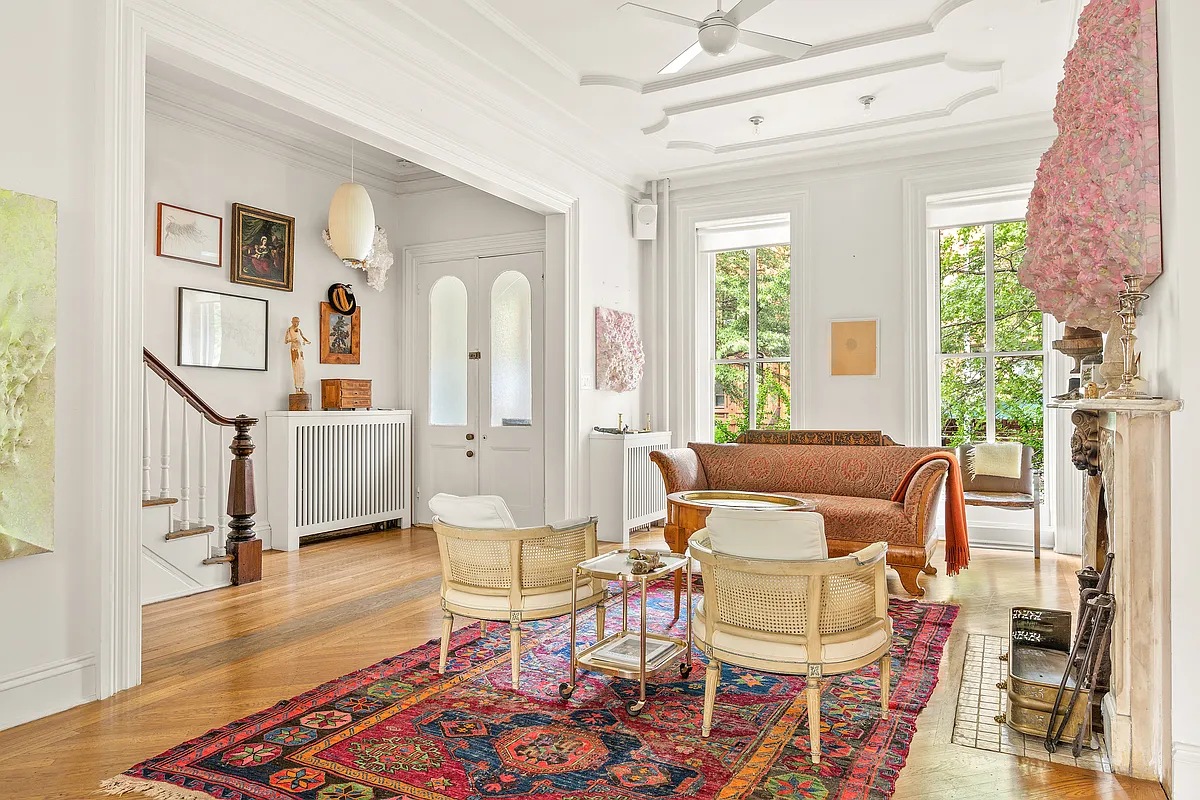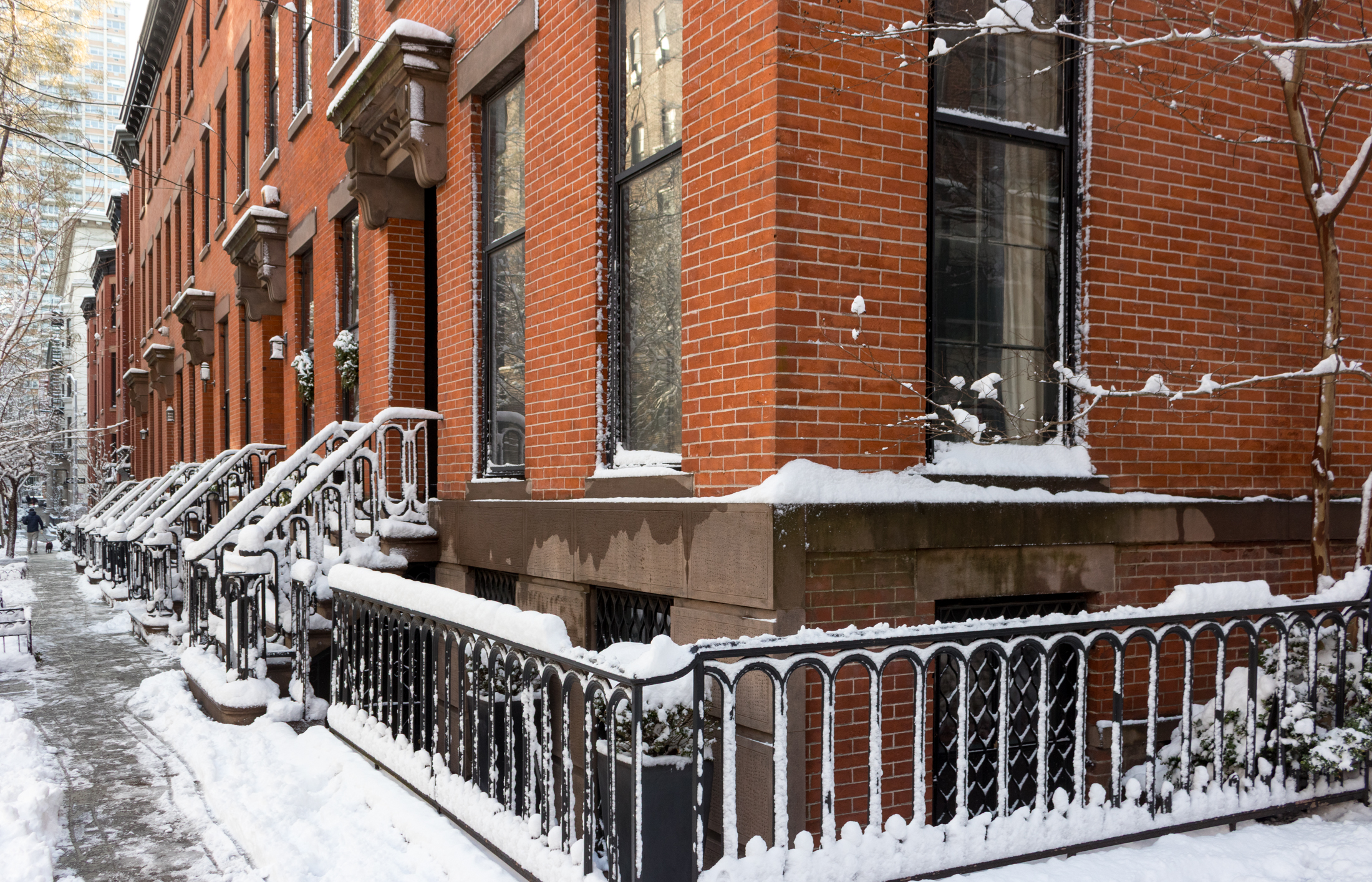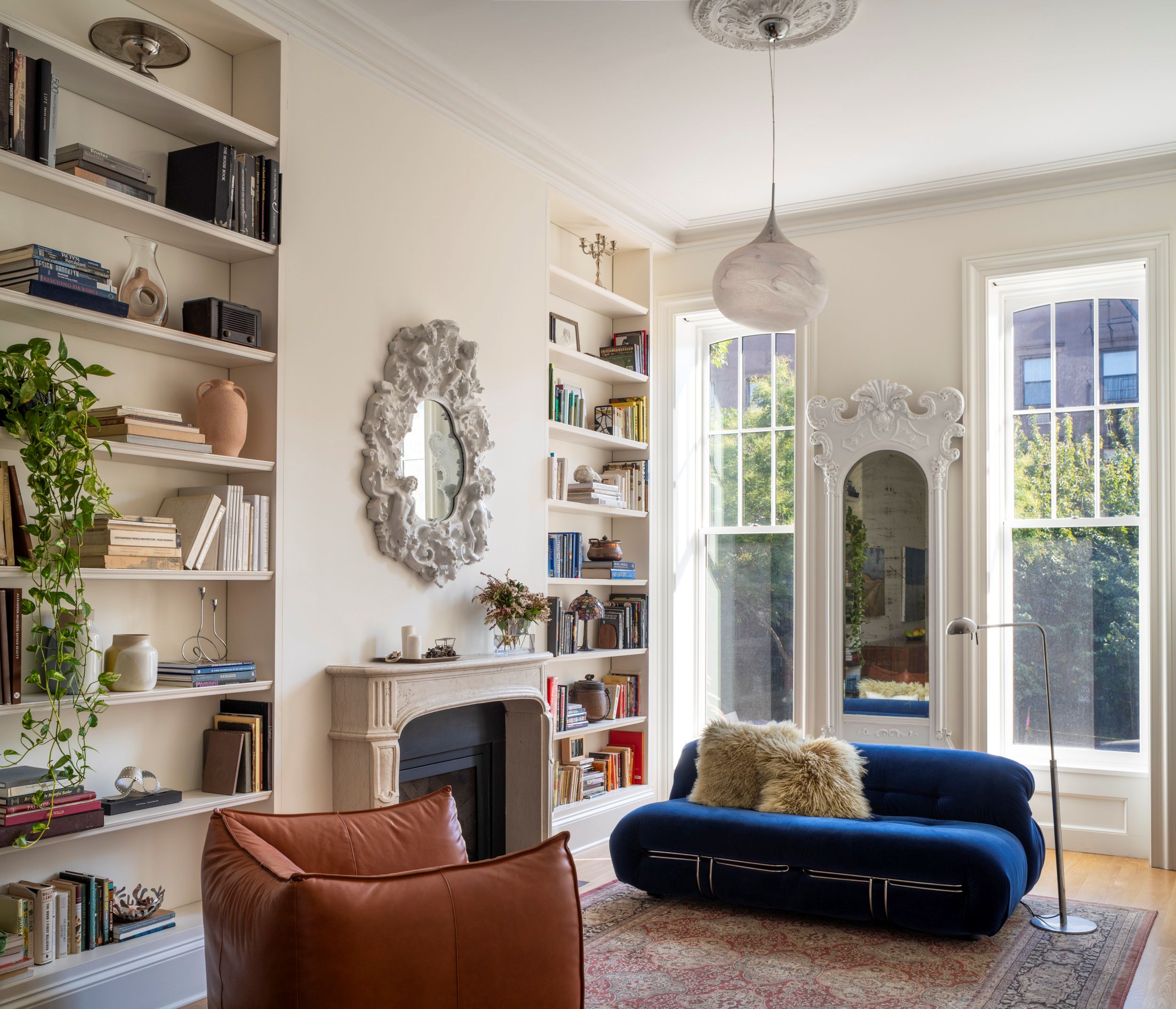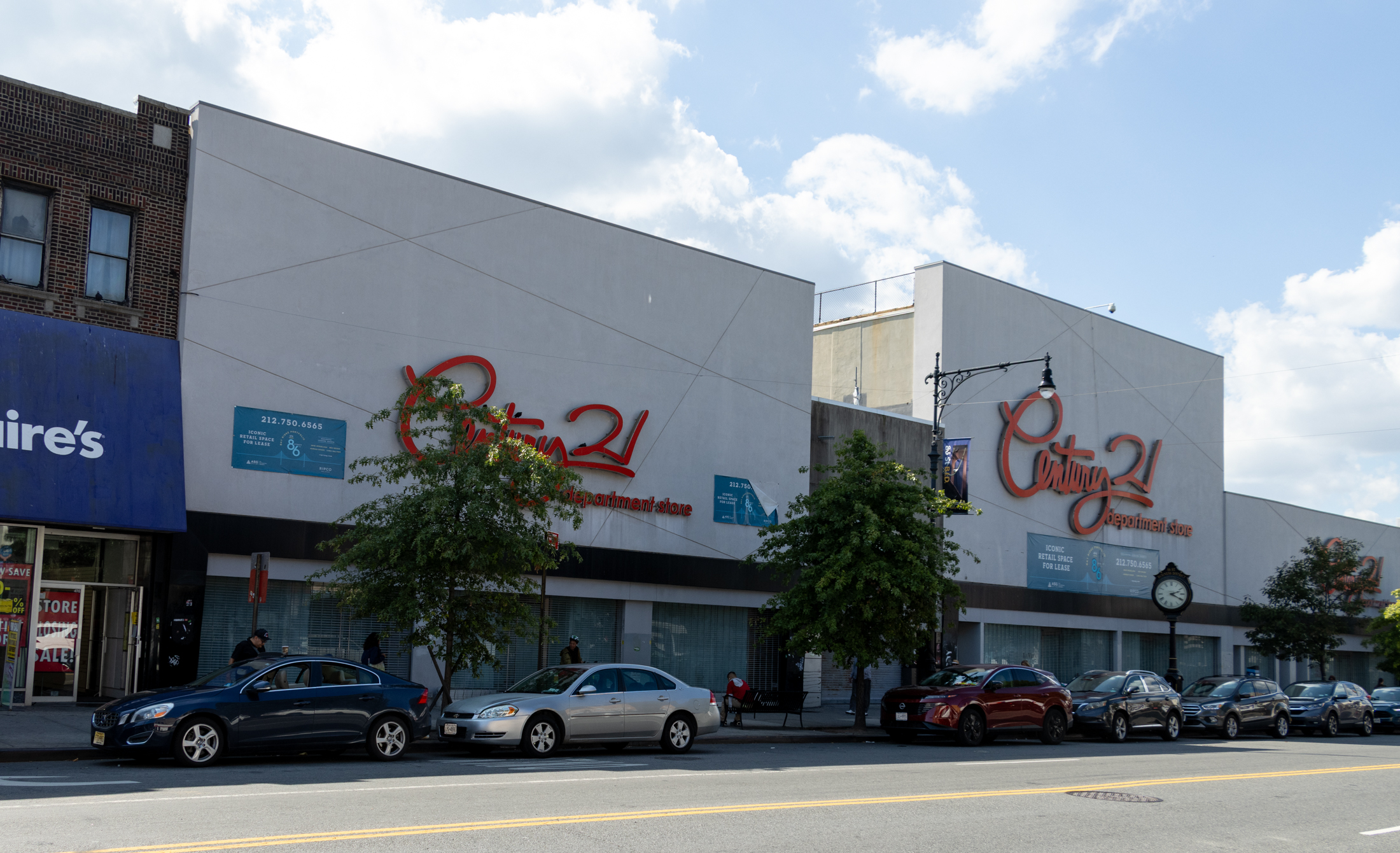Walkabout: St. Marks Avenue, Conclusion
Read Part 1 of this story. At the turn of the 20th century, the St. Marks District was synonymous with elegance and prosperity. Mansions lined both sides of St. Marks Ave. from Nostrand to Brooklyn Avenues, and fine homes, with large grounds and carriage houses could be found in the surrounding blocks. Not all of…


Read Part 1 of this story.
At the turn of the 20th century, the St. Marks District was synonymous with elegance and prosperity. Mansions lined both sides of St. Marks Ave. from Nostrand to Brooklyn Avenues, and fine homes, with large grounds and carriage houses could be found in the surrounding blocks.
Not all of the homes were freestanding mansions, however. As could be seen in other posh neighborhoods, like Park Slope and Brooklyn Heights, row houses could be as elegant and opulent as freestanding homes. St. Marks between Brooklyn and Kingston, was an especially fine street, facing what was then called Bedford (now Brower) Park.
Some of Brooklyn’s most important architects; Montrose Morris, George P. Chappell, Magnus Dahlander, Axel Hedman, Frank Helmle, and PJ Lauritzen are among the architects on this row. The houses are an eclectic and varied group, ranging from Romanesque and Queen Anne to Renaissance Revival and Beaux Arts.

All are very large, most very ornate, all quite in keeping with the standards of the District. The Montrose Morris houses, 855 and 857 St. Marks, an attached pair built for an extended family, has a handsome carriage house accessible from a driveway with an ornate wrought iron gate.
The Chappell houses, the first in the row, were built in 1888, with the last, the Hedman houses, being built in 1910.
Further west, two freestanding houses still stand on St. Marks between Nostrand and New York. One is a wide Renaissance Revival by George P. Chappell, built in 1891, next door to a red brick and terra-cotta Queen Anne with an unusually wide arched entryway.
The next block, between Nostrand and Rogers is often overlooked, but is, in many ways, as important a block, architecturally, as the Brower Park block. The most unusual house is a clinker brick Queen Anne three story freestanding house designed by EGW Dietrick in 1888, when the District was still in its early days.

Although in need of restoration, it is still an arresting design, enhanced by the very large carriage house behind the main house. Most of the rest of the block is taken up by excellent groups of Renaissance Revival brick row houses, including a pair of exceptionally wide houses, the largest at 34′, and other large and ornate Romanesque Revival/Queen Anne rowhouses.
Another of these Renaissance Revival houses, 645 St. Marks, was home to architect George P. Chappell, who designed it and its neighbor. An impressive apartment building, the St. Mark is also on this block, notable for the unusual and heavy iron ball and chain railing.
As the 20th century progressed, the neighborhood began to undergo changes. It didn’t take long for apartment buildings and hotels to start to replace the older Second Empire wooden and brick mansions.

The Brooklyn Eagle advertised house after house that fell to developers, including the Schwartzman home on the corner of Nostrand and St. Marks, replaced by a six story apartment building, the Clarke home on the opposite corner, to be replaced by an apartment hotel in 1902.
A victim of its own success and desirability, exclusive St. Marks Avenue was succumbing to progress. The Straus mansion was replaced by a row of semi-detached Georgian Revival houses built on spec in 1919-20. These are the last private houses to be built on St. Marks Avenue.
Even the magnificent and expensive Clarence Seamans mansion stood for less than thirty years. By 1928, it was torn down for the Excelsior Apartments, an upper middleclass apartment building.

The other mansions fell to large apartment buildings, built in neo- Tudor, Medieval, and Federal styles in the 1920’s and 30’s, so that by the 1960’s only two or three of the grand dames remained on blocks now completely filled with large apartment buildings.
The mansion that stood at 725 St. Marks was torn down for a branch of the Brooklyn Public Library in 1963. The Nissen mansion was bought by a Russian shipping company in 1935 and turned into The Soviet School, a private elementary school for 35 boys and girls. This was one of the last homes on St. Marks to be torn down, razed for the 1976 building of the Marcus Garvey Nursing Home.
The fine Brower Park block, known since the 1930’s as Doctor’s Row because most of the homes were now private practices, as well as doctors’ homes, has also changed. By the 1930’s the Dean Sage mansion was home to prominent dental supply executive Dean Clay Osborne.

He was the last private homeowner in the house. By the end of the ‘30’s, the house had gained a large rear institutional extension, and became a senior citizen home, and is currently a home for people with developmental difficulties. Today, the house is in need of exterior restoration and landscaping.
The large garden in the rear has not been kept up, although the shadows of formal gardens and beds remain.
The two mansions which once stood on the corner of Brooklyn Avenue that made up the original Brooklyn Children’s Museum were razed in the 1970’s as well, replaced with an innovative underground museum, which still exists under the new Rafael Vignoly bright yellow addition just completed in 2007.

The rest of the block is intact, except for two places. Two lots in the middle of the block were cleared for a suburban looking Baptist church in 1960, replacing 2 houses by architect Albert A. White, a prolific Crown Heights architect. In the 1980’s a fire destroyed one of a four limestone group at 863 St. Marks.
The lot remained vacant until 2006, when a completely non-contextual red brick no-style house with parking pad was erected on the site. A year later, landmark status protects the block from future atrocities.
Today, St. Marks still remains one of the finest streets in Crown Heights North. The apartment buildings that replaced the mansions are impressive, well built and quite good.

The remaining free-standing homes and rowhouses are mostly in excellent shape, and are a source of pride in the community. Brower Park has been reclaimed, and now has a neighborhood society intent on improving this beautiful park with its old growth oaks and open spaces.
The Brooklyn Children’s Museum is more popular than ever. For many in the community, a house on St. Marks is still a sign of moving on up. Take a look at the Avenue on Flickr.
[Photos by Suzanne Spellen]





Interesting juxtaposition of MM generally upbeat description of the rebound of St Marks with NOP’s mournful (and honest) musings on what it once was.
Brownstoner:
Montrose Morris’ two-part series on St. Marks Avenue is both fascinating and painful for me. These are the blocks I knew as a boy growing up in Crown Heights during the 1950s and 1960s. Their residual grandeur makes me homesick. Their degradation makes me heartsick.
When I was a youngster there were still enough of the old houses left to make the stretch of St. Marks from Rogers to Kingston one the most beautiful places in Brooklyn. Something even little kids understood. The broadness of the street. The set-back gardens. The towering trees. The well-maintained apartment houses. All leading to Brower Park and the Childrens’ Museum, pictured in its historic home on Montrose’s Flickr Page. Here life was balanced among friends, the park and hands-on exhibits in the “witch houses” (which is what we called them) at the park’s little hill top. And just around the corner was our school, P.S. 138.
Although the street’s outlines remain, its current condition is shocking. Then again, adults of my parents’ generation bilked the area as landlords, red-lined it as bankers, block-busted it as realtors and scarred it for architectural travesties like the library branch near Nostrand and the elders’ housing near New York. Now my generation adds insult to injury with perpendicular parking and the misplaced expansion of the museum, which chokes the park off from St Marks at what had been its most important — and handsome — entrance.
Was anything more pleasant than riding a bicycle up St Marks then dipping into Brower Park? Anything more convivial than lining up with pals waiting for the public library’s Bookmobile to tool up Brooklyn Avenue to have us peruse the shelves? Even the trees along St Marks have disappeared, revealing the (now) scabrous facades on the apartments between New York and Nostrand. That some buildings like the Betsy Ross and Excelsior have managed to hold on so long appears nothing short of a miracle.
With extension of the Crown Heights North Historic District, old-timers and newcomers may help resurrect St Marks’ former glory. But its going to take time, especially because so many of the buildings along the street are apartment houses and, from appearances, managed by companies that just don’t give a damn. Hopefully Eastern Parkway, many of whose buildings were in similar bad shape ten and twenty years agao, can serve as a model for gradual conversion to cooperatives and condominiums (leaving current tenants in place).
One of my favorite photographs is of my little brother on a slide in Brower Park. It’s winter and the fellow wears the funny deers’ hunter cap so popular among kids at the time and a facsimile of a Norfolk jacket. In the background are the Montrose-Morris houses in Doctor’s Row. My brother smiles from ear-to-ear anticipating the thrill of the ride.
Simple. Simple. Simple. But in an environment — for Brooklyn at the time — of unmatched appeal.
Gone now.
Nostalgic on Park Avenue
some preservationist please buy that house else it might fall into my hands with a low bid and I’ll be putting in Mr Slim units
That St. Marks townhouse has everything,
limestone
rounded turrets
private balcony
gables
copper accents
multiple levels
ample space
what more could you ask for.
Pete, that would involve some serious research, into census records, phone directories, etc. Maybe someday I’ll be able to do that.
I love hearing about the Old Bedford Park district. These townhouses really stand alone in style.
how long were these designed mansions actually occupied by original owner (or family) or even remained as single family houses? where did they depart this neighborhood for?
I walk past this area all the time, great to hear some of the history. Thanks so much!
It’s still a wonder to me that the seamen’s mansion only lasted for 26 years. 1928 was definately a bubble year, I guess we should be thankful for recesions/depressions other wise would have lost more great housing stock.